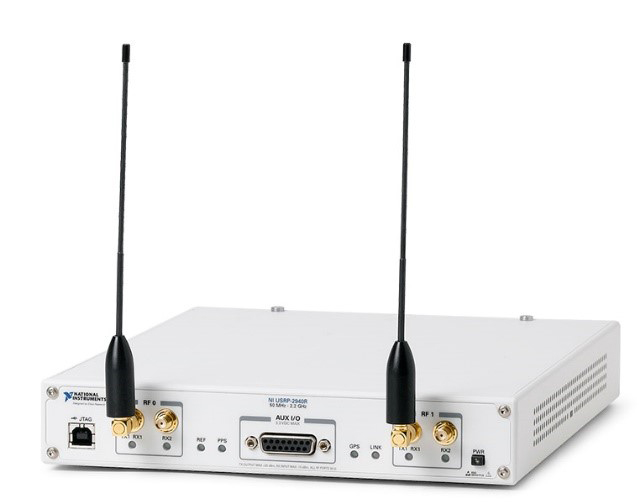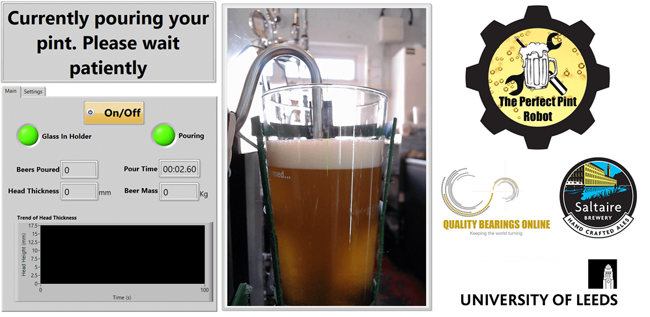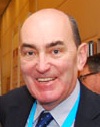
The NI Days UK 2017 annual graphical system design conference and exhibition not only provided attendees with the opportunity to learn about the latest technology available to accelerate productivity for software-defined systems in test, measurement and control but also offered a perspective on the disruptive and influential technology trends that are set to shape the future of our industry along with the world that we live in.
Fittingly, NI Days UK 2017, which took place on 28 November, made use of the conference and exhibition facilities at Sandown Park Racecourse, where instead of the usual racehorses the capabilities of favourites from the National Instruments stable such as LabVIEW, PXI, CompactRIO and CompactDAQ were demonstrated and exercised in a multitude of applications that outlined their scope, flexibility and reliability. And, in the Afternoon Keynote the company’s latest thoroughbred – LabVIEW NXG 1.0– was introduced and showcased.
To be able to develop such products that fulfil design and development requirements, now and in the future the identification of trends with potential is key and led National Instruments to the publication of NI Trend Watch 2018. The thinking behind this document formed the basis of a press conference at NI Days UK 2017, fronted by Dave Wilson, Vice President, Product Marketing for Software, Academics, Customer Education, Jeffrey Phillips, Section Manager, Platform Software and Yiannis Pavlou, EMEIA Marketing Director.
Together they covered five major technology developments:
● The proliferation of smart and connected ‘things’ in the Industrial Internet of Things (IIoT).
● 5G – how test and measurement solutions will be key in the commercialization cycle.
● Breaking Moore’s Law – what that means for the future of the semiconductor market.
● Vehicle Electrification: implications beyond the increasingly complex vehicle itself, including new demands on supporting infrastructure.
● Automating engineering insights with machine learning
On the hot topic that is particularly relevant to the RF and microwave industry – namely 5G – Jeffrey Phillips was the main spokesman. He began by saying, “18 months to two years ago we were speculating about mmWave frequencies around 5G – as a society we have made so much progress in the last 18 months – it is crazy!
He added, “If you follow the news that we share as a company a lot of the successes that we have seen are the first ever – the world first this, the highest value of that, the first time on this frequency.”
Phillips also stated, “We are starting to see nudges on the research side transitioning into the test side,” which echoes NI Trend Watch 2018 that proffers: “5G innovation doesn’t stop at design. Test and measurement solutions will be key in the commercialization cycle, but 5G requires a different approach to test than previous wireless technologies.”
Phillips made the point that, “Most of the opportunities that we see in 5G as we look to transition to the test side are built around the PXI platform. And it just so happens that PXI is the same platform that a lot of our customers use to run their production tests. So, there is going to be tremendous cost savings and efficiency when we do get to the transition stage and start running production tests.”
Wireless researchers across the world are taking a platform-based approach to 5G with software at the core. Nokia introduced the first mmWave 5G prototype at 73 GHz and broke the record for mobile access data rates using mmWave spectrum. Lund University developed the first Massive MIMO prototype, and researchers at the University of Bristol and Facebook extended their Massive MIMO prototypes to achieve unprecedented spectrum efficiency milestones.
The importance of spectrum efficiency is demonstrated by the research being carried out by Professor Izzat Darwazeh and his team at University College London who were case study finalists in the Wireless Communications section of the NI Engineering Impact Awards that were presented at a ceremony at Sandown Park Racecourse the evening before NI Days UK 2017.
The team began their research into spectrally efficient frequency division multiplexing (SEFDM) in 2003, with it gaining increased relevance with the development of 5G. Although SEFDM systems have been demonstrated through research publications and laboratory experiments, up until now only offline systems have been demonstrated, which simplifies the problem and avoids system-level development at the FPGA level.
In the work featured in the UCL case study the research team demonstrated the world’s first real-time SEFDM system using USRP RIO and the LabVIEW Communications System Design Suite. The key innovation is in the deployment of a novel real-time channel estimation and equalisation algorithm, combined with a real-time iterative detector. The system compresses transmitted signal bandwidths up to 60 percent (for BPSK) and 30 percent (for QPSK), offering significant bandwidth savings, thereby satisfying one of the key challenges of 5G deployment.

The SEFDM 5G transceiver prototype developed by University College London using LabView Communications System Design Suite and USRP RIO.
The SEFDM system saves bandwidth by compressing traditional orthogonal frequency division multiplexed (OFDM) subcarrier spacing beyond the orthogonality limit, thus increasing spectral efficiency. This enhancement in spectral efficiency translates directly into a gain in capacity, which is of paramount importance to network operators who could use this technique to add an additional 30 to 60 percent number of subscribers (depending on the modulation format) without higher spectrum licensing costs. Hence, SEFDM becomes a timely and key technique for future 5G communication systems and beyond.
Significantly, the UCL team plans to make the code open source and available online so that the research, industrial and equipment manufacturer communities anywhere in the world can experiment with and develop the system and consider it for future standards.
Professor Darwazeh told Microwave Journal that having got to this stage it is apparent to him that SEFDM technology has clear advantages over other methods being researched, with potential to deliver the spectral efficiency required for 5G to be successfully implemented and adopted. To this end the team’s work at UCL will continue.
As well as providing an insight into the latest technology and acknowledging the work of its partners NI Day UK 2017 offered engineers and scientists from a variety of industries, the opportunity to share best practices and example code with fellow developers and a platform to exchange information with NI technical staff as well as the chance to learn about the latest innovations that will inspire and equip them to solve engineering challenges.
The first opportunity came at the opening Morning Keynote titled: Testing and Deploying the Next Generation of Technology, which highlighted how the NI platform is accelerating innovation in applications ranging from transportation safety, wireless communication, space travel, and the Internet of Things.
After that the breakout sessions were divided into focused tracks covering: Software, Industrial Internet of Things, Validation & Verification, Test & Measurement, Data Acquisition, Big Data Management, Business & Technology, Semiconductor, Academic, Wireless Prototyping and LabVIEW Power Programming. Popular as always were the Hands-on Training sessions that offered a practical insight.
The Afternoon Keynote addressed: The Next Innovation in Engineering Software outlined how NI continues the LabVIEW legacy with the introduction and demonstration of the capabilities of the new LabVIEW NXG 1.0. The keynote was concluded by guest speaker, Stuart Dawson, Chief Technology Officer, University of Sheffield’s Advanced Manufacturing Research Centre (AMRC). He considered how super-trends, like Industry 4.0, energy and the electrification of transportation, are changing the way we live and work.
Throughout the day a complementary exhibition showcased the latest advancements in design, control and test, where NI experts and industry partners demonstrated products, services and solutions for test, measurement and control systems. There was also a Meet the Engineer Booth where a combination of experienced, certified alliance members and knowledgeable NI technical support staff were available to offer advice.
The day was rounded off with a Wrap Up and Drinks Reception and a final chance to look around the exhibition where one of the finalists of the NI Student Design Competition was shown at its best, being, ‘The Perfect Pint – A Beer Pouring Robot’ developed by students at the University of Leeds.

Now that is real application of technology!

